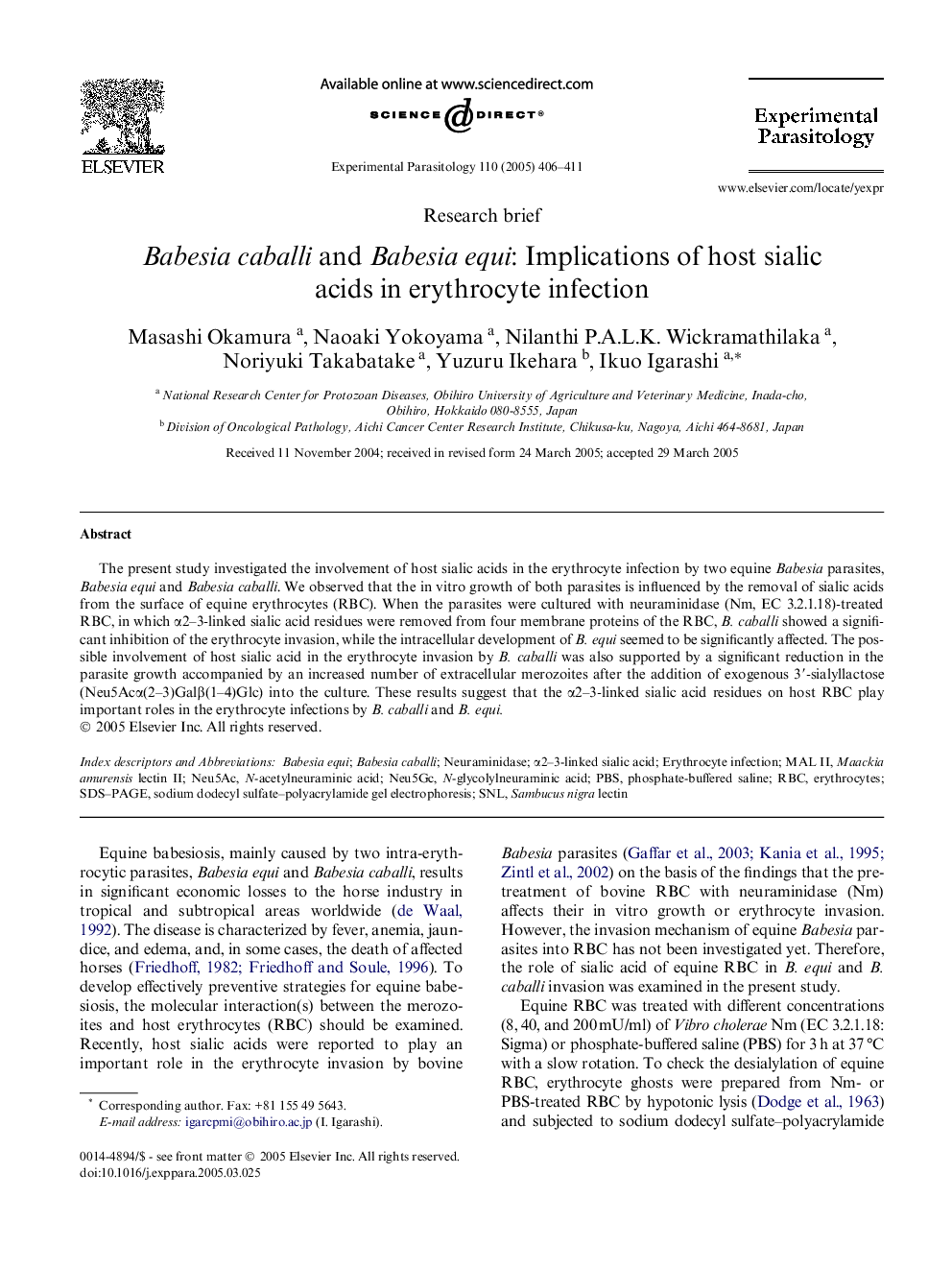| Article ID | Journal | Published Year | Pages | File Type |
|---|---|---|---|---|
| 9442812 | Experimental Parasitology | 2005 | 6 Pages |
Abstract
The present study investigated the involvement of host sialic acids in the erythrocyte infection by two equine Babesia parasites, Babesia equi and Babesia caballi. We observed that the in vitro growth of both parasites is influenced by the removal of sialic acids from the surface of equine erythrocytes (RBC). When the parasites were cultured with neuraminidase (Nm, EC 3.2.1.18)-treated RBC, in which α2-3-linked sialic acid residues were removed from four membrane proteins of the RBC, B. caballi showed a significant inhibition of the erythrocyte invasion, while the intracellular development of B. equi seemed to be significantly affected. The possible involvement of host sialic acid in the erythrocyte invasion by B. caballi was also supported by a significant reduction in the parasite growth accompanied by an increased number of extracellular merozoites after the addition of exogenous 3â²-sialyllactose (Neu5Acα(2-3)Galβ(1-4)Glc) into the culture. These results suggest that the α2-3-linked sialic acid residues on host RBC play important roles in the erythrocyte infections by B. caballi and B. equi.
Keywords
Related Topics
Life Sciences
Immunology and Microbiology
Parasitology
Authors
Masashi Okamura, Naoaki Yokoyama, Nilanthi P.A.L.K. Wickramathilaka, Noriyuki Takabatake, Yuzuru Ikehara, Ikuo Igarashi,
